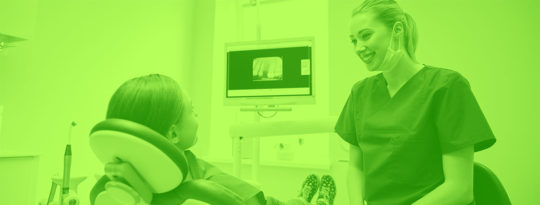BETTER EFFICIENCY FOR 11,000+ PRACTICES NATIONWIDE
Discover how Lighthouse 360+ helps thousands of dental practices run better than ever.
EXPLORE THE MAP“Lighthouse 360+ has been great since we have been able to communicate with our patients through a text which is wonderful. It is a great product!”
“Lighthouse 360+ has more than paid for itself. They have helped us to keep patients in the chair. They have helped up us to minimize broken appointments. They have increased our bottom line.”
“I recommend Lighthouse 360+ to office managers all the time. Their customer service is excellent. They are patient-focused, customer-focused, and their product is user-friendly for our staff. Partnering with Lighthouse 360 has been one of the best decisions we have ever made.”

Learn how Lighthouse 360 helped Fareno Dental keep up and become more productive and efficient than ever before.
READ THE FULL CASE STUDYFareno Dental: How Lighthouse 360 Makes This Small Practice More Efficient
With just one dentist and two hygienists, making the most of every hour in the day is key to the success of Fareno Dental, a general and family dental practice in Feasterville, Pennsylvania. But too many of those valuable hours were spent on the phone calling patients to confirm or reschedule appointments. “With 30 to 40 patients a day, we needed to cut down on staff phone time,” says office manager Michele Fareno.
Before choosing Lighthouse 360, Fareno considered a competing patient communication software provider. “We liked what [the competitor] offered, but they wanted us to sign a one- or two-year contract,” she recalls. Since it was their first experiment with patient communication software, Fareno was reluctant to be locked in. She chose Lighthouse 360 because it offered not only great features but also a flexible, no-risk month-to-month subscription model.
Time-Saving Features
Since implementing Lighthouse 360 three years ago, Fareno has never looked back. “It’s been a great addition to our office,” she raves. The two-way texting feature has transformed how Fareno Dental communicates. “We use it to communicate with a lot of patients for many reasons, such as to quickly change or cancel appointments.”
One of Fareno’s favorite features is Cancellation Fill-in. Previously, whenever a patient cancelled she had to grab a written list and call each patient to try to fill the appointment. Fill-in automatically contacts patients on the waiting list until it fills the slot. “We call it ‘fishing’—when you have a cancellation, you just throw your line out and reel in a patient. It’s a great feature to keep your schedule full,” says Fareno.
Tools to Cope With COVID
Lighthouse 360 has also helped Fareno Dental cope with the challenges of COVID-19. “We used the Virtual Waiting Room when we re-opened in May 2020. The COVID screening form that goes out to patients before their appointment has really helped cut down on paperwork in the office.” After patients complete the digital form, she can just print it out and add it to their chart.
Fareno has come to rely on Lighthouse 360’s mass email and mass texting features. “It’s nice to have these options, because some patients are better with email and some prefer texting,” she notes.
Mass email and texting also saves Fareno tons of time. Prior to Lighthouse 360, notifying patients about changes in procedures due to COVID-19 would have required laboriously calling each patient. With Lighthouse 360, it was as simple as sending a mass email and mass text.
“A Great Investment”
2020 was a year like no other, and Lighthouse 360 helped Fareno Dental keep up. “[The software] is constantly evolving and improving,” says Fareno. “[Lighthouse] is always making good, timely changes. When we need help, we always get a very quick response. The customer service is amazing!”
More productive and efficient than ever before, Fareno Dental will never go back to those days of time-consuming phone calls. If you’re considering patient communication software, Fareno has one thing to say: “Lighthouse 360 is a great investment in your office.”

Find out how Lighthouse 360 helps this practice do more and cope with COVID-19.
READ THE FULL CASE STUDYHansen Family Dental: Doing More Thanks to Lighthouse 360
Beth Nicole Damon, Office Manager/RDA at Hansen Family Dental in Pasco, Washington, had used several different patient communication solutions in her time at the practice—but none of them were quite what she was looking for. When Lighthouse 360 offered a free demo, Damon quickly realized, “[Lighthouse] offers more than any other company does.”
Unlike most patient communication software, Lighthouse 360 doesn’t require a long-term contract—just a month-to-month subscription. Knowing she wasn’t going to be locked in made it easier for Damon to switch.
Recall, Reactivation, and Email Marketing Features
The ability to automatically contact dormant patients with reactivation letters was the first feature that caught Damon’s eye. “Having the option to send an activation letter or inactivate the patient is really helpful.” The recall feature, which automatically contacts patients who are due for a hygiene appointment, is another favorite time-saving tool.
Prior to Lighthouse 360, Hansen Family Dental wasn’t maximizing the potential of email marketing. Now, Lighthouse 360’s user-friendly email features and templates make it easy to create and send targeted email communications. “I love being able to send out campaigns when we’re running a special or have a new product,” says Damon.
Helping the Practice Cope with COVID-19
Hansen Family Dental has been using Lighthouse 360 for about three years, but the software has proved its value in new ways during the COVID-19 pandemic. The Online Bill Pay feature allowing patients to pay on the practice’s website has been especially helpful. “We’ve never had an online payment option before,” Damon says, “but with the [pandemic], we’ve had to evolve.”
The two-way texting feature makes pre-screening patients for COVID symptoms simple. Damon likes it for other reasons, too. “A lot of patients can’t answer their phones [or] prefer text,” she explains. “If you’re trying to confirm an appointment and they haven’t responded, you can reach out that one last time by text [and usually get a response].”
Speaking of responsiveness, Damon has nothing but raves for Lighthouse 360’s customer service team. “Customer service is really streamlined, and I’m able to get a response the same day.”
Spend Time on Relationships, Not Phone Calls
With one dentist, herself and one other front desk employee, and an average of 40 patients per day, Hansen Family Dental is a busy place. Damon says Lighthouse 360 is like having “a whole other person” on the team. Instead of spending hours on the phone, the front desk can focus on more important things, like building patient relationships. For example, her co-worker, who’s also a dental assistant, now has time to step in and help with patient care when needed to keep the office on schedule.
Asked what she would tell other office managers considering Lighthouse 360, Damon laughs: “I’d tell them, ‘You need to get it!’ ”
Client Name: Beth Nicole Damon
Location: Pasco, Washington
Website: https://www.hansenfamilydental.com/

Learn how Dr. Goff saves hours a day thanks to Lighthouse 360.
READ THE FULL CASE STUDYKanawha Valley Dental Group: Saving Hours a Day Thanks to Lighthouse 360
After over 35 years in practice at Kanawha Valley Dental Group in St. Albans, West Virginia, Craig Spicer, DDS, had plenty of patients and a busy schedule. His staff was busy, too—busy making phone calls, that is.
Kanawha Valley Dental Group sees 40 to 60 patients per day. Calling every patient to confirm or reschedule appointments or fill cancellations “was almost a full-time job,” says office manager Amber Goff. But without the calls, many patients wouldn’t show up and chairs would go unfilled.
“It takes a lot of time out of the day to have to call everybody and make sure everybody remembers their appointment,” Goff says. But she knew there was a better way: Lighthouse 360.
More Time for What Matters
Goff had used Lighthouse 360 in other dental offices where she’s worked and had always been very happy with it. Now that Kanawha Valley Dental Group is using it too, the two front desk employees finally have time for more important tasks than making phone calls. “[Lighthouse 360] probably saves us at least 4 to 5 hours per day,” Goff estimates.
The texting feature of Lighthouse 360 is what Goff appreciates most. “We love the texting feature. When we need to let a patient know we had a cancellation, it’s easier and faster to text [than to call]. Plus, in this day and age, people prefer a text to a phone call.”
Fast, Easy Patient Communications
Goff’s team saves even more time by sending mass texts and mass emails for patient communications that would previously have required phone calls. For example, to ensure patient safety during the COVID-19 pandemic, “we sent out a mass email letting patients know our criteria for appointments so that everyone knew what to expect before they came in,” Goff says.
For dental office managers considering their patient communication software options, Goff enthusiastically recommends Lighthouse 360: “It will definitely make your life easier!”
Client Name: Amber Goff
Location: St. Albans, West Virginia
Website: https://www.saintalbansdentist.com/

Find out how Lighthouse 360 gives this practice a Virtual Assistant.
READ THE FULL CASE STUDYSmiles By Rembos: Lighthouse 360 Gives This Practice a Virtual Assistant
Communicating with patients at Smiles By Rembos can be complex. The cosmetic, general, and implant dentistry and oral surgery practice has two dentists and four locations in Marco Island, Naples, Fort Myers and Sanibel, Florida. Adding further complexity, its clientele includes many “snowbirds”—retirees who visit Florida only part of the year.
The patient communication software Smiles By Rembos was using wasn’t helping matters; it was complicated and hard to use. So when Dr. Alan Rembos heard Lighthouse 360 could save his practice time and make it more efficient, he signed up for a trial. Since then, the Smiles By Rembos team has never looked back.
Patient Communication Made Easy
Front Office Coordinator Stacey Mitchell says two-way texting is her favorite feature of Lighthouse 360, especially since she can text directly from the Lighthouse portal. “I’m usually on the phone,” she explains. “[With Lighthouse], if a patient’s running late or the office is running late, I can just bring up the program, type a text and send it immediately with no time wasted on my end.”
Patients appreciate texting, too. “It’s non-invasive, so they don’t have to drop what they’re doing; they can get to it when they get to it,” Mitchell explains. “All they have to do is click C for confirm—it’s really easy for them. And it’s on their cell phone, so if they forget what time their appointment is [or which location they’re visiting], they can go back and check.”
Automation Saves Time
Most of the practice’s appointments are now confirmed using Lighthouse 360’s automated appointment reminders, which saves Mitchell a lot of time, as does the automated messaging for patient recall and reactivation.
Mitchell also likes the Front Desk Task List feature, which automatically generates a list of recommended tasks each morning. “It’s great for checks and balances,” she says. “[For example], if the hygienist didn’t schedule a patient, I can go back and find out why.”
A Virtual Helper
“I’ve used three different [patient communication systems] in my 15 years, and this is the easiest to use and navigate,” says Mitchell. The few times she has needed Lighthouse customer service, she says, it’s been professional, helpful and most important, quick: “They know I’m busy!”
Is your practice on the fence about whether to implement patient communication software? Mitchell notes that a monthly subscription to Lighthouse 360 costs much less than hiring another employee. (Plus, there’s no annual contract required.)
“This is like having an assistant who’s not in my way,” she says. “With Lighthouse, I know I’ve got a virtual helper.”
Client Name: Stacy Mitchell
Location: Fort Meyers and Sanibel, Florida
Website: https://www.smilesbyrembos.com/